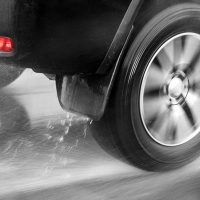Car Accidents Involving Wet Roads

Some people like to stay home and listen to the rain fall outside their windows, while others prefer to put on their boots, grab an umbrella, and go for a walk in the rain. Hardly anyone likes to drive in rainy conditions. Approximately one of out every five car accidents occurs in adverse weather conditions, according to the Department of Transportation, and nearly 70 percent of these occur when roads are wet because of rainfall. It is not always possible to avoid driving in the rain, but there are things you can do to reduce your risks of getting into a collision on a rainy day. If you have suffered injuries in a car accident where wet roads were a contributing factor, contact a Columbia car accident lawyer.
What Is Hydroplaning?
Hydroplaning is when a car skates on a layer of water on the road, so that it is not directly in contact with the pavement. The design of tires, with grooves running along the circumference of the tire, is meant to divert water away from the surface of the tire, so that the tire can maintain its traction and not slip and slide on the road. If there is more water than the tire can scatter away from its surface, then the car will hydroplane; this usually happens because the driver is driving too fast on a slippery road.
Hydroplaning is dangerous because, when it happens, you are not actually driving on the road, but rather on a thin film of water. Therefore, your steering wheel and brakes do not have their usual effectiveness in helping you control the car. The risk of hydroplaning does not correlate exactly with the heaviness of the rainfall; the biggest risk of hydroplaning is actually the first ten minutes of the rainstorm. During this time, the rain water is washing away the oils on the road, and these are even slipperier than just plain rainwater.
Drive Slowly, Even in Light Rain
The best way to avoid hydroplaning is to drive at a slow speed, even if the rain is just starting. The risk of hydroplaning is much higher when you drive at speeds above 30 miles per hour. If you find yourself skidding, pressing heavily on the brakes will make things worse. If possible, let your car slow down naturally, but if you would not be able to avoid a collision by doing that, then brake gradually. In today’s cars, there is no need to pump the brakes; most cars on the road today have anti-lock brake systems, and these can handle gradual braking.
Let Us Help You Today
Most car accidents are preventable, even the ones where adverse weather conditions increase the chances of a collision. The car accident lawyers at the Stanley Law Group can help you if you were injured in a car accident where wet roads and hydroplaning were involved. Contact The Stanley Law Group in Columbia, South Carolina or call (803)799-4700 for a free initial consultation.
Source:
https://ops.fhwa.dot.gov/weather/q1_roadimpact.htm
